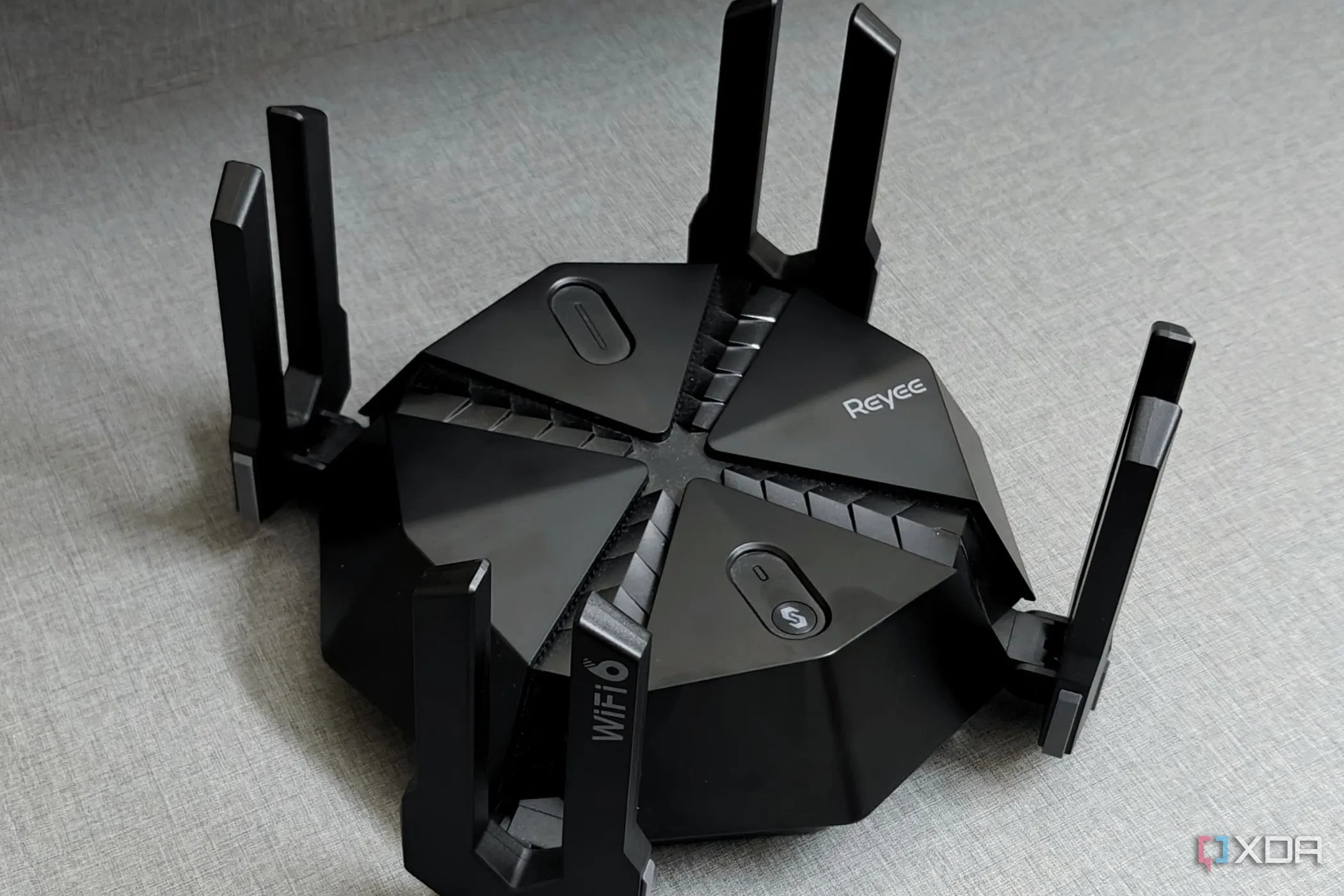By Adam Conway
A little-known trick to boost your router's signal is a sheet of tinfoil, but it won't always work.

Key Takeaways
- Tinfoil can boost router signal by reflecting and directing Wi-Fi waves, like crafting a makeshift directional antenna.
- Avoid tin foil if needing omnidirectional signal, as it can degrade network performance in different areas.
- 3D printing reflectors can increase throughput, but may not be worth the effort compared to just buying a new router.
If you're struggling to improve your router's signal, a little-known trick you can pull off is one that just requires some tinfoil. If your router is in a place where the back of it is facing away from the rest of your home, you can place tinfoil behind it to bounce the signal forward in the direction of where your devices actually will be. This is especially useful where the signal-to-interference-plus-noise ratio (SINR) is poor.
If your router needs to be omnidirectional, then you shouldn't try this. It can cause your network performance to degrade in different places throughout your home.
How using tinfoil to boost your router's signal works
It's all science

WmJR from Washington DC, USA, CC BY-SA 2.0, via Wikimedia Commons
Wi-Fi signals, like any other type of radio waves, can be reflected and directed. By strategically placing tinfoil around your router, you’re basically crafting a makeshift directional antenna. If you've ever read about "cantennas" with Pringles cans, it's a very similar concept. In essence, you're playing around with radio waves to make them better suited to the environment that you're working in.
As for why routers don't just do this out of the box, it's because they're made to blast radio waves in all directions for the most convenience for an end-user. If you know that you just need your router to work unidirectional, then you can try and focus that signal output to be in the area you actually need it. In effect, it’s like pointing a flashlight where you need the light, rather than lighting up the entire room.
If you want to build a rudimentary version of this yourself, you can do it in just a few minutes.
1. Measure and Cut: Cut a piece of tinfoil. Not too large, but enough to work with.
2. Shape It: Mold the tinfoil into a parabolic shape behind your router’s antennas. You can use a can or a ball to get the shape right if you have a large enough one before fitting it behind the router.
3. Position It: Make sure the shiny side of the tinfoil is facing the direction you want to boost the signal to. This will help direct the signals out towards your devices.
You can experiment and play around with this by then running multiple network tests to see if things improved. When I was 13 years old playing Counter-Strike in my bedroom at my parents' house, this was the only way for me to get a signal worthy of actually playing games online, but I remember it took a bit of experimenting to get it right. If things don't improve for you, though, then there's another thing you can try... but it requires 3D printing.
The scientific method requires a 3D printer
At this stage, maybe you should just buy a better router

Researchers at Dartmouth College in New Hampshire once demonstrated how, when taking into account proper calculations for an environment, they could 3D print reflectors that increased throughput in some areas by as much as 55.1%. This obviously weakened it in other areas, as you're taking signals destined for other areas and redirecting them to a new place, but it shows that the concept at least works.
However, if you're going to lengths that require a 3D printer, you should probably just invest in a new router. This is a hacky method that has been demonstrated to work, but the amount of effort it requires to get really good results probably isn't worth it. This is a neat trick that could maybe get you some extra bang for your buck without needing to go out and buy a new router, but if it doesn't get the job done then there probably isn't much more optimization you can do to try and force it to work.
Related
Best routers for gaming in 2024
Keep pings low and consistent with a router designed for gaming.